- Home
- Thomas Keneally
Australians: Origins to Eureka: 1 Page 2
Australians: Origins to Eureka: 1 Read online
Page 2
Sometimes Aboriginals sailed on returning prahus to Makassar and beyond. A small number of Yolngu settled there, in the Celebes. Those who came back told tales of the city, and the surprise of seeing policemen and soldiers is preserved in dances and song. Young men who visited Makassar came back with enhanced reputations and their knowledge of the Makassar language made them leaders in future dealing between Yolngu and the trepangers.
Coastal communities of the Yolngu traded the foreign goods they acquired with inland groups, so tales of the Makassans spread wider than did the sight of them. Arnhem Land songs of the Makassans and cave wall depictions of them occur throughout the region of Marege, and Marege as a word is still honoured by Yolngu people as a more kindly name than Arnhem Land.
Because of the Makassans the Yolngu people were the earliest Aboriginals exposed to smallpox, yaws and venereal disease, and also to firearms, tobacco and alcohol. Despite these inheritances, the Yolngu to this day will say about Makassans, ‘We are one people.’
THE COY COASTS
Known to the trepangers but merely guessed by the Europeans, in 1598 a Dutch geographer, Cornelius Wyfliet, wrote: ‘The Australis Terra is the most southern of all lands, and is separated from New Guinea by a narrow strait. Its shores are hitherto but little known, since after one voyage or another that route has been deserted, and seldom is the country visited unless sailors are driven there by storms. The Australis Terra begins at 2 or 3 degrees from the Equator, and is maintained by some to be of so great an extent that if it were thoroughly explored it would be regarded as a fifth part of the world.’
This was a reflection of an ancient belief in the Antipodes—a continent in the southern hemisphere to balance the size of Europe and Asia combined. Hence geographers presumed that the Australis Terra must stretch away far south towards the Antarctic ice.
It has recently been claimed that the Ming Emperor’s eunuch admiral, Zheng He, a Muslim, landed in Australia in 1421, in treasure ships of great size and sophistication. As yet, there is no conclusive evidence, but the Ming navy maintained a trading post in Ambon in the Moluccas (now part of Indonesia), so that a Ming vessel coming to the northern Australian coast is not unlikely.
Later, Portuguese entrepreneurs and garrisons were also based in the Moluccas, the Spice Islands west of New Guinea. These were far to the western, Spanish side of the line Pope Alexander IV had drawn to divide the riches of the planet between his two treasured but warring Iberian nations. The Portuguese had got there as a result of their king’s marriage with the Spanish king’s sister, the bride price being the trading rights to the Moluccas. Had they discovered the great coastline of Australia to the south, they would have kept quiet about it, since the Spaniards would have been able to claim the place, and all its unassessed wealth.
One could say that for purposes of discovery the Australian continent took up a coy position on the globe. It was hidden beneath a screen of islands stretching from the Solomons to Java and Sumatra, wearing New Guinea as its north-eastern cap. It was cunningly lodged west of Cape Horn and east of the Cape of Good Hope, and best approached only by that screaming band of westerly winds, the Roaring Forties, far, far to the south. It was huge but not as huge as the expected mass, and did not lie where that mass was surmised to be.
There were a number of notable Spanish near-misses at encountering Australia. In 1568 a Spanish commander, Alvaro de Mendana, crossing the Pacific from Peru, discovered the Solomon Islands, so naming them—in the spirit of advertising rather than piety—in the hope that Spaniards might assume that these were the isles from which Solomon had got the gold to adorn his temple. Nearly forty years later, a master of one of Mendana’s vessels, Pedro de Quiros, petitioned King Philip III to allow him to take three ships to search for the southern continent which de Quiros believed must be south-west of the Solomons. At the island of Espiritu Santo in Vanuatu, de Quiros’s flagship seems to have been taken over by its crew. His young second-in-command, Luis de Torres, continued the reconnaissance with his two remaining ships, and searched west, but not far enough to encounter the Barrier Reef and the coast of Australia. Turning north he reached the coast of New Guinea, where he found himself confronted with reefs and islands in a complicated and perilous strait which still carries his name and is a byword for navigational perils.
At least it was proof that New Guinea was not, as de Quiros had thought, part of the Great South Land. De Torres saw the mountains of the mainland of Australia, at Cape York, but believed them to be merely further islands. From the quarterdeck of his vessel, San Pedrico, he was only a handful of miles distant.
Nonetheless, de Quiros had already named the continent he was sure existed south of where he was bullied by his crew into returning to Peru and which he would even claim to have discovered. Austrialia del Espiritu Santo was his choice; ‘Austrialia’ intended as a compliment to Philip III of Spain, who was by blood an Austrian Hapsburg.
In another near-miss, a little Dutch ship named the Duyfken had entered Torres Strait from the west in March 1606, a few weeks before de Torres sailed through it. But when nine of the crew were murdered by natives, the Melanesian people who occupied the islands of Torres Strait, the skipper Willem Jansz turned about, and Australia was again left uninterrupted.
Where had Willem Jansz come from? When Philip III achieved hegemony over the Portuguese, he closed Lisbon to the Dutch ships that sailed there to collect spice produce from the Moluccas and elsewhere. Consequently, at the end of the sixteenth century, a group of Amsterdam merchants sent out their own fleet to the Moluccas, the Spice Islands, via the Cape of Good Hope. Suddenly there were many Dutch ships on their way to and from the archipelago which is now named Indonesia. Their preferred route of passage made no sense in an as-the-crow-flies reading of the globe. Initially, once they got around South Africa, the Dutch tried to get to Indonesia by sailing north-east across the Indian Ocean. But they often became becalmed and so much in need of supplies that six out of ten of their crew would die, meaning that the ships stuck on the opaque, unmoving sea were surrounded by the not always successfully weighed-down corpses of their dead crewmates.
The passage that worked best, the Dutch discovered, was to sail round the Cape of Good Hope, but to then reach south to catch the Roaring Forties across the lower quarter of the globe, run east before these gales, and then turn to port and reach north for Indonesia. Given that equation, a number of Dutch ships encountered the Western Australian coast. They named it, without affection, New Holland. Some of them collided with or put in to it.
A master named Dirk Hartog, in the Eendragt (Concord), met the deeply indented Shark Bay, one of the westernmost points of the Australian continent, and landing on an island which bears his name, left there a tin plate marked 25 October 1616. Through further such contacts, the west coast of what would prove to be the Australian continent acquired a number of Dutch names, such as Cape Leeuwin, named for a 1623 ship (Leeuwin/Lioness) which met with it. Like the south-west coast of Africa, the west coast of New Holland acquired a reputation as a desert of no economic potential.
In a horrifying sideshow to the tide of Dutch voyaging, on 4 June 1629 the Batavia of 650 tonnes, a ship more notable in tonnage than most British ships of the day, with more than three hundred on board, became stuck on a reef and sand spit off the Western Australian coast. The captain left the wreck to look for water on the mainland, leaving 268 people behind. Not finding any, he sailed on to Batavia (now Jakarta) for help. Returning to rescue the survivors, he found that a crazed seaman named Cornelisz, with his followers, had beheaded, stabbed and drowned 125 men, women and children.
This news reverberated with the most celebrated of the Dutch captains in the South Seas, a man born near Groningen around 1603. Like the others, he foreshadowed a strong Protestant timbre in the ultimate nation-state of Australia, though it would be the British version that prevailed, not the Dutch. As a young sailor he had enjoyed a rapid promotion within the Dutch East India Company, a stu
rdily commercial operation not interested in exploration for exploration’s sake. But by 1642, Viceroy Van Diemen—his master, the governor at Batavia—gave the captain, Abel Tasman, two ships for exploratory purposes. Tasman’s wife and a daughter from his first marriage lived with him in Batavia, the fever port, and he had led a number of well-managed voyages.
At the best, Tasman was to find a route south of New Holland to South America, where the Dutch hoped to erode the Spanish monopoly. ‘Slight misdemeanours on the part of such natives [you encounter],’ Van Diemen wrote to Tasman before his protégé set sail, ‘such as petty thefts and the like, you will pass unnoticed, that by doing so you may draw them unto you, and not inspire them with aversion to our nation.’ However, if gold or silver were found, ‘appear as if you were not greedy for them, and if gold and silver is offered in any barter, you must feign that you do not value these metals, showing them copper, zinc and lead, as if those metals were of more value to us.’
The men who manned these Dutch ships were tough seamen used to heinous conditions. On a voyage in 1638, looking for a non-existent island in the northern Pacific, Tasman had reached Formosa (now Taiwan) with only fifty of the crew of ninety alive. Things had not massively improved since the previous century and the days of Magellan, one of whose men described the sea biscuit as turned to powder and stinking of rats’ urine, the ship’s water impure and yellow, and the only fresh meat the aforesaid rats.
Leaving Batavia in August 1642, Tasman’s two ships, the Heemskerk and the Zeehaen, took a zig-zag route through the Indian Ocean to Mauritius and then southwards. Once they had found the westerly gales, for most of their journey they were hurled along at 42 degrees south latitude. At last they came up against the wind-buffeted coast which Tasman called Van Diemen’s Land, but which now carries his own name. An attempt to land was made but the weather was too rough. A carpenter swam through the surf with a Dutch flag and took formal possession of the land on 3 December 1642.
A later navigator, the Englishman Matthew Flinders, would name two dominating mountains behind the coast in honour of Tasman’s two ships.
Sailing to the south of Van Diemen’s Land, after nine turbulent days Tasman encountered the wild west coast of the south island of New Zealand, where three of his Dutchmen were killed and a fourth mortally wounded by Maoris at the site still named Massacre Bay. He returned to Batavia by way of the islands north of New Guinea. Two years later he would explore Australia from North West Cape to Cape York, extending the known map of New Holland.
Back at home in Batavia, he would within two years become a member of the Council of Justice. He and Van Diemen, however, must have been angrily resigned at the letter that came from the Dutch East India Company’s managers when they received the news of Tasman’s voyage of 1644. ‘We do not expect great things of the continuance of such explorations,’ wrote the company, ‘which more and more burden the company’s resources, since they require increase of ships and sailors . . . the gold and silver mines that will best serve the company’s turn have already been found, which we deem to be our trade over the whole of India.’ By the time Tasman died in Batavia in 1659, New Holland still held no allure for the Dutch.
PIRATING WORDS
Nearly thirty years later, in 1688, a Somerset-born sailor-cum-pirate-cum-journalist named William Dampier—sober, fascinated by nature, and in his late thirties; indeed, the antithesis of the common piratical stereotype—first visited Australia as a member of the crew of the buccaneering ship Cygnet, whose Captain Swan had been abandoned, as the result of mutiny, in Mindanao. The Cygnet was a captured Spanish prize ship, and after visiting the Celebes accompanied by another prize ship, the crews decided to sail for New Holland, ‘to see what that country would afford us’. The Cygnet anchored on the mainland near Melville Island, off north-western Australia, and the crew camped ashore for some weeks, eating the local delicacies, dugong, turtle and plentiful estuarine barramundi, with the rice they had brought with them from the Celebes.
These British pirates were amongst the very first Europeans to encounter the Australian indigines. William Dampier found the natives of Melville Island, whose descendants still live there, resistant to the trinkets he and others offered, and made uncomplimentary comments on their appearance and terms of existence. Though the native men threatened the buccaneers with spears, and the women, crying lustily, removed their children from reach, his opinion was that they were ‘the miserablest people in the world’ and that the Hottentots of southern Africa were ‘for wealth gentlemen’ by comparison.
The remarks should be judged from the context that Dampier was the closest thing to a monk that a buccaneer could be. He wrote letters home to his wife, he abhorred drunkenness and when on Cygnet’s long crossing from Mexico to Guam, when the rest of the crew were howling with hunger on their diet of half a pint of maize a day, Dampier recorded that—given a recent fever—the short rations did him a great deal of good.
Thus, when he wrote of the natives being the most miserable, he was talking from his own less than favoured position of their material culture. The important question of what had held them together as a society for tens of millennia went unenquired into.
The crew careened the ship in King Sound on the north-west coast of the Australian mainland, on a beach with a 10-metre tide, and scrubbed the hull in an attempt to rid it of teredos or shipworms. Then they departed west, and though Dampier drew a draft chart of the coast, he lost it with other papers when a longboat he was being rowed ashore in, having insisted on leaving the ‘mad crew’ of Cygnet, capsized off one of the Nicobar Islands.
Back in England, after a time in Hanoi where he was racked by fever, Dampier published an account of his travels: A New Voyage Around the World. It attracted attention and made him a celebrity. As a naturalist, he was well on the way to introducing into English more than a thousand new words, including algatross (which Coleridge would transliterate as ‘albatross’ in his famous Rime of the Ancient Mariner) barbecue, cashew, breadfruit, avocado, posse, tortilla and chopsticks. Jeoly, a Mindanao ‘painted prince’ he had intended to exhibit, was taken away from him by apparent trickery, but his book was his great success. In 1699, he was commissioned as master of the ship Roebuck to make a journey into the region of New Holland he had already made famous.
Had he come around the Horn and through the Pacific he might have stolen James Cook’s thunder by seventy years, but he did not like the Horn and its icy challenges, and so decided to sail by way of the Cape of Good Hope, thus encountering only those regions which the Dutch had already visited. He landed near present-day Carnarvon at what he called Shark’s Bay because his men caught and ate shark there. He would write, ‘If it were not for that sort of pleasure which results from the discovery even of the barrenest spot upon the globe, this coast of New Holland would not have charmed me much.’ He again described the natives as repellent, the most unpleasing human beings he had ever encountered, ‘though I have seen a great variety of savages’.
Dampier spent four months in the west and north-west of Australia, and explored some 1600 kilometres of the unrelentingly dry coast. His men suffered from the hot weather and began to display symptoms of ‘the scorbutic’, scurvy. The ship was rotting around him, the garbage in the bilges fermenting riotously in the tropic air. Roebuck thus became the stinking, worm-impregnated wreck he had to abandon at Ascension Island on the way home.
Later, because the Roebuck had been supplied by government, he faced a court martial which declared him unfit to command any of His Majesty’s ships. He did command a privateer, however, financed by sundry businessmen, and very unsuccessfully. It was his literary work which would last beyond his death in 1715. The Lilliput of Dean Swift corresponded, in the map Swift printed in Gulliver’s Travels, with the west coast of Australia, and Gulliver would claim, in the famous book of 1726, that he was a cousin of that adventurous buccaneer, Dampier.
There was evidence of a trading journey to northern Australia, in 1
751, conducted by a Chinese merchant. He reached ‘the southern coast’ where he met indigenous people. The Dutch Resident of Timor wrote, ‘Though said Chinese took it for a large island, we do not doubt it will have been the mainland coast of the southland.’ This news when it reached Amsterdam sparked great interest in the Dutch East India Company and for a time the idea of trade with northern Australia revived.
But nothing happened.
THE GRAND INTRUSION
In the late 1760s, the Navy Board of Great Britain went looking for ‘a proper vessel’ that could voyage to Tahiti in the South Seas and observe the transit of the heavenly body Venus across the face of the sun. If experts observed the transit of Venus in a number of locations, calculations could be made which would help yield the accurate distance of Earth to Venus and Earth to the sun. Thus the handmaiden to the European discovery of Australia, or at least its enormous east coast, was the planet Venus. The transit would occur on 3 June 1769, and there would be no reappearance until 1874.
A number of ships were inspected but the one chosen lay at Shadwell Docks: a Whitby (or Yorkshire-built) square stern-backed, single-bottomed vessel named the Earl of Pembroke, later to be renamed Endeavour. It had been a collier. Its dimensions scarcely do honour to its ultimate and diverse impact—it was only 106 feet (c 32 metres) long overall, only 97 feet 7 inches (c 30 metres) long on her lower deck, where the crew were to live, and a mere 29 feet 3 inches (8.8 metres) broad. She would challenge all her sailors, many of them American colonials, to find space on her decks.
The Navy Board paid £2800 for her. To get her ready to reach Tahiti and beyond and to observe the transit of Venus, they had her towed to Mr Bird’s shipway at Deptford, where workmen applied a lining of thick felt on her hull and then fixed further but thinner boards to protect her against the Teredo navalis, the ravenous shipworm of the tropics. This was the little tub which in measuring Venus would also find the measure of Australia.

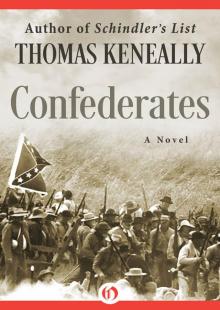 Confederates
Confederates Flying Hero Class
Flying Hero Class Gossip From the Forest
Gossip From the Forest Schindler's List
Schindler's List Bring Larks and Heroes
Bring Larks and Heroes Australians: Flappers to Vietnam
Australians: Flappers to Vietnam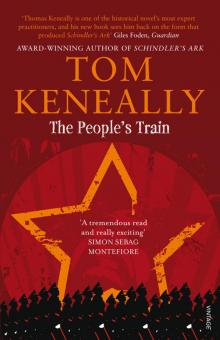 The People's Train
The People's Train Crimes of the Father
Crimes of the Father A Family Madness
A Family Madness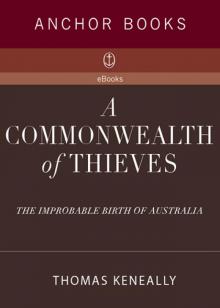 A Commonwealth of Thieves
A Commonwealth of Thieves Ned Kelly and the City of Bees
Ned Kelly and the City of Bees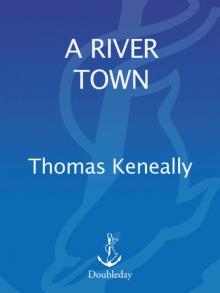 A River Town
A River Town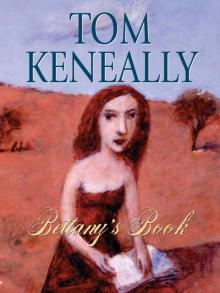 Bettany's Book
Bettany's Book Blood Red, Sister Rose: A Novel of the Maid of Orleans
Blood Red, Sister Rose: A Novel of the Maid of Orleans Victim of the Aurora
Victim of the Aurora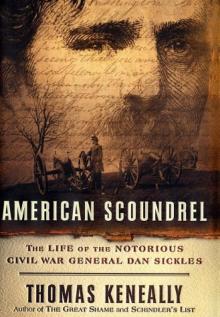 American Scoundrel American Scoundrel American Scoundrel
American Scoundrel American Scoundrel American Scoundrel Three Cheers for the Paraclete
Three Cheers for the Paraclete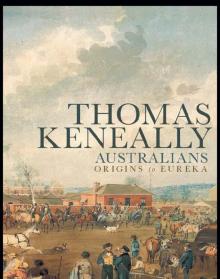 Australians: Origins to Eureka: 1
Australians: Origins to Eureka: 1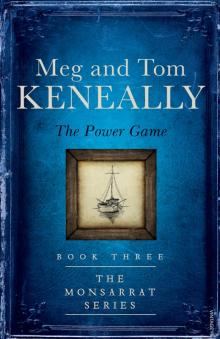 The Power Game
The Power Game The Chant Of Jimmie Blacksmith
The Chant Of Jimmie Blacksmith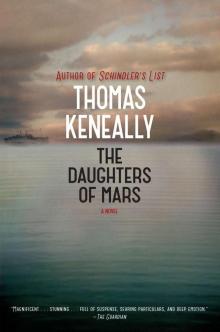 The Daughters of Mars
The Daughters of Mars Searching for Schindler
Searching for Schindler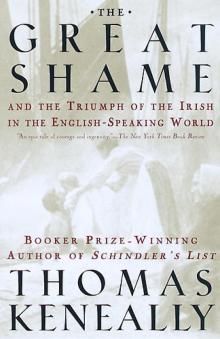 The Great Shame: And the Triumph of the Irish in the English-Speaking World
The Great Shame: And the Triumph of the Irish in the English-Speaking World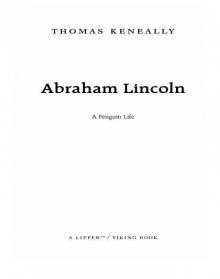 Abraham Lincoln
Abraham Lincoln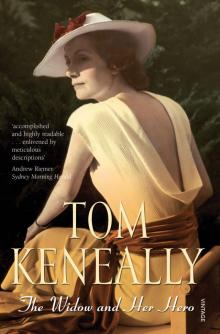 The Widow and Her Hero
The Widow and Her Hero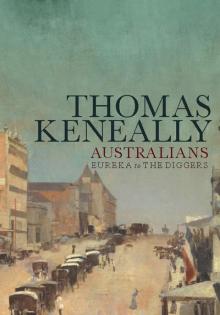 Eureka to the Diggers
Eureka to the Diggers Shame and the Captives
Shame and the Captives The Survivor
The Survivor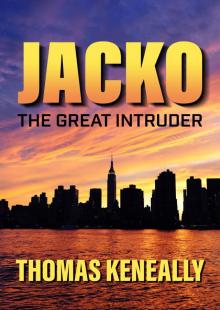 Jacko: The Great Intruder
Jacko: The Great Intruder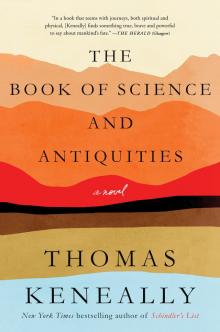 The Book of Science and Antiquities
The Book of Science and Antiquities Homebush Boy
Homebush Boy The Playmaker
The Playmaker To Asmara: A Novel of Africa
To Asmara: A Novel of Africa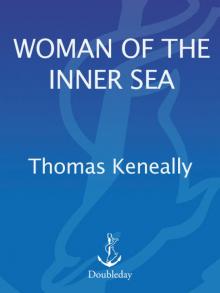 A Woman of the Inner Sea
A Woman of the Inner Sea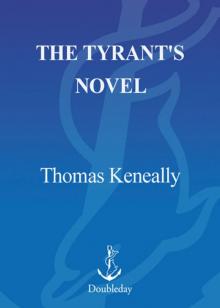 The Tyrant's Novel
The Tyrant's Novel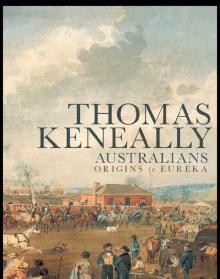 Australians
Australians Schindler's Ark
Schindler's Ark The Soldier's Curse
The Soldier's Curse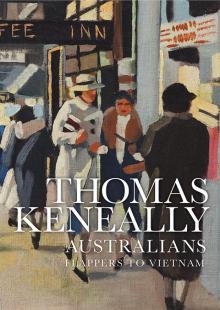 Australians, Volume 3
Australians, Volume 3 Blood Red, Sister Rose
Blood Red, Sister Rose A Victim of the Aurora
A Victim of the Aurora The Unmourned
The Unmourned Australians, Volume 2
Australians, Volume 2 To Asmara
To Asmara